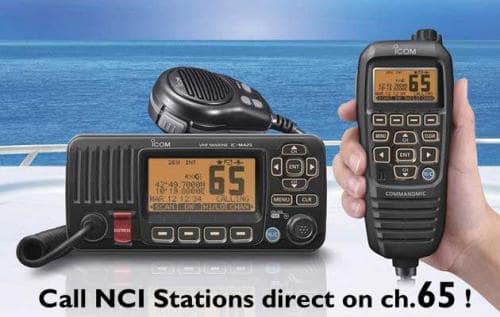local vhf channel usage
Proper use of the VHF channels is an important safety factor. Channel usage in the Milford Haven Waterway has some differences from that in other areas so we have compiled this guide. VHF call signs are indicated as e.g. “Milford Haven Coastguard”. [printer friendly version (A5)]
N.B. Ensure that your VHF is set to “INT(ernational)” not “US(a)”! Radios operating on USA channel settings will not hear the reply from an NCI Station (on ch.65), from a Marina (on ch.80), or receive the new Maritime Safety Information channels (ch.62,63,64). New radios are often set to “US” when bought; use the menus to reset them to “INT”.

Distress, safety and hailing channel

Channel 16: Primarily intended for distress, urgency and safety priority calls. Ch16 may also carry routine calls used to establish communication before switching to a working channel. Calling/Hailing Channel: Users must transfer immediately to a working channel (normally 06, 10, 72 or 77) |
Milford Haven Coastguard

| Channels 62,63,64: used by the Coastguard for Maritime Safety Information (MSI) broadcasts. |

| Channel 67: Used by Milford Haven Coastguard (“Milford Haven Coastguard”) for routine traffic |
National Coastwatch

| Channel 65: National Coastwatch Institute UK channel – call direct (not via 16) for radio checks, present weather, inshore weather forecast, and local information… Call signs… Wooltack Point: “Wooltack Point NCI” – Gelliswick Bay: “Gelliswick Bay NCI” |
Port Operations

| Channel 12: “Milford Haven VTS” (Vessel Traffic Services) – monitor this channel in the Milford Haven Port area to be aware of ship movements. In dire emergency (e.g. imminent risk of collision) can be used to contact a ship – then go to a working boat channel (6, 72, or 77). The Harbour Master’s launch “Water Ranger II” can be contacted on this channel. |

Channel 14: Milford Marina Lockmaster “Pier Head” (VHF Ch.14, call sign: Pier Head, Tel: +44 (0)1646 696310) and assistance will be provided when required.

Channel 80: Marina working channels
